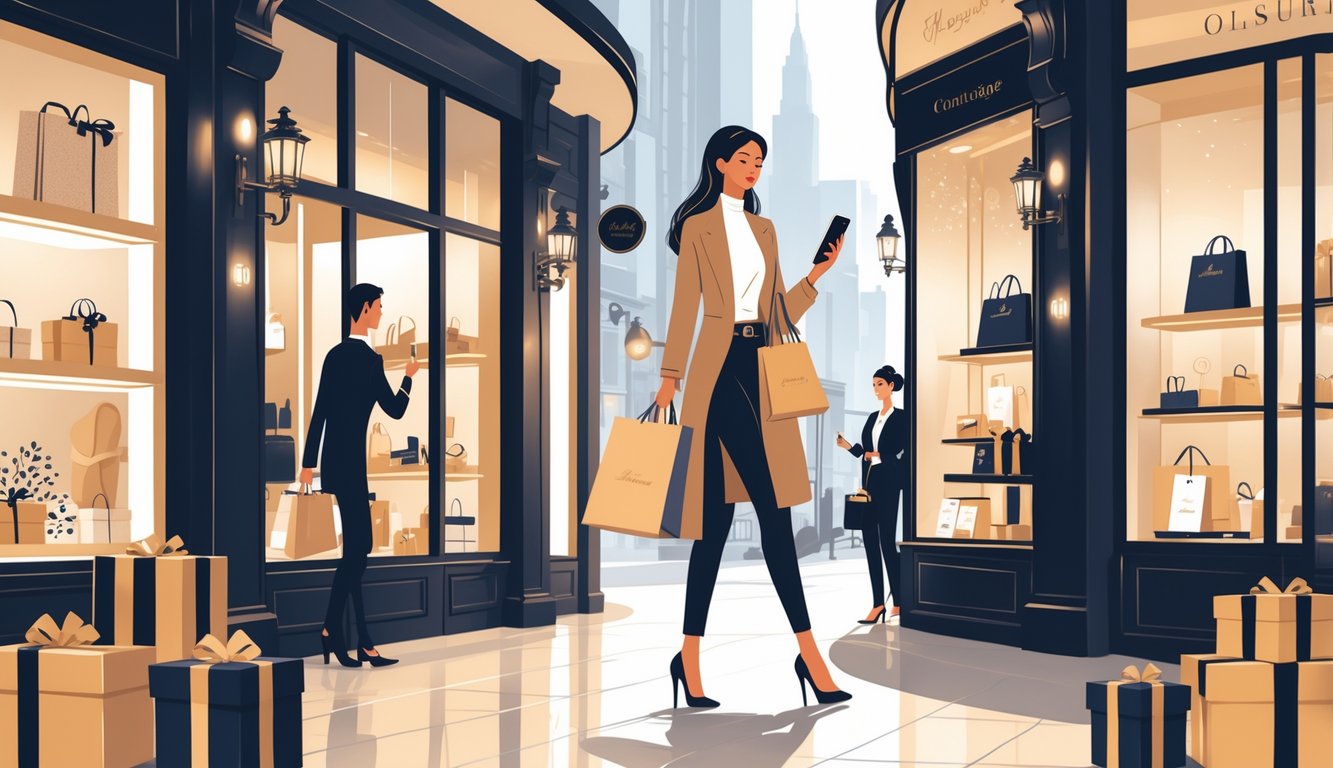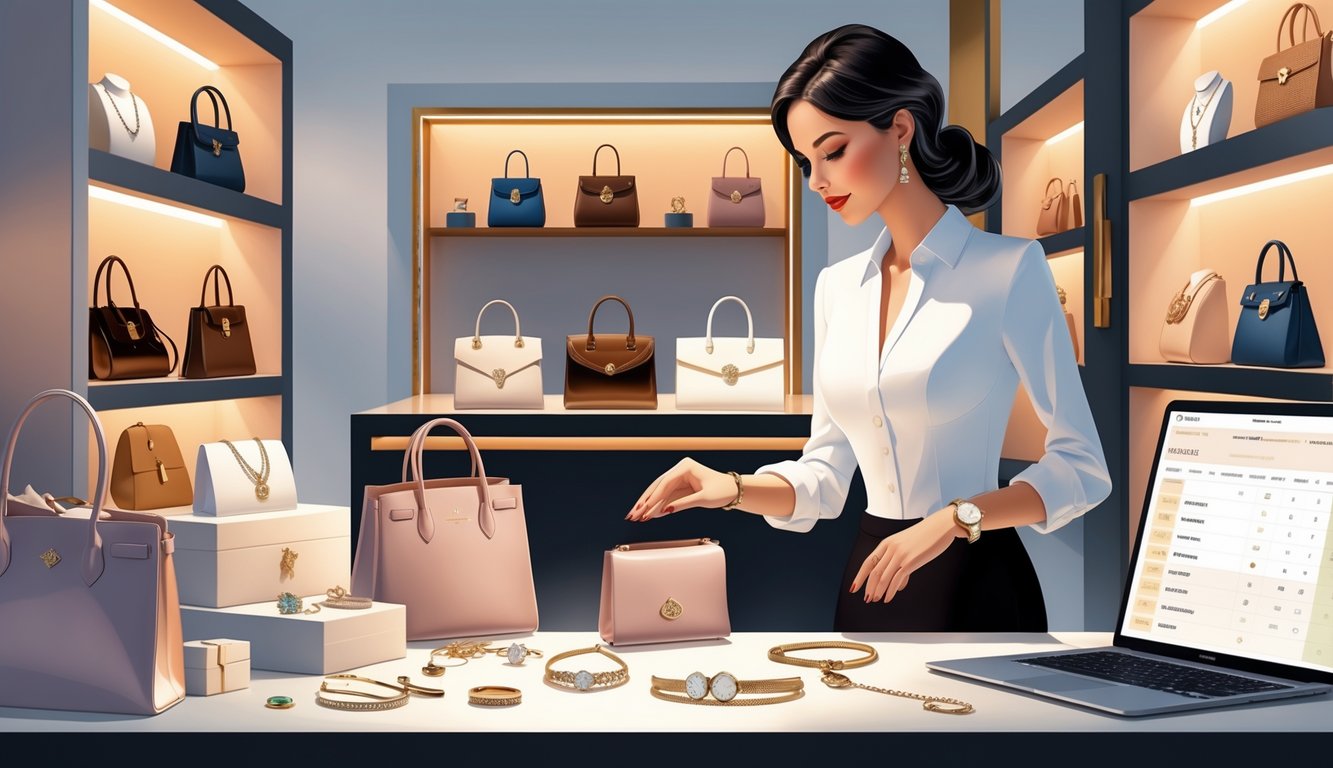
Ten months in and, honestly, I’m still annoyed nobody warns you: finding a Chanel classic flap for your sister-in-law’s birthday is like some weird Olympic event for people with photographic memory and the reflexes of a caffeine-addled eBay sniper. People love to throw out “insider” tips, but here I am, juggling exchange rates, mixing up time zones, and texting a Paris personal shopper at 2 a.m. to ask if a VAT refund is actually a hack or just, you know, basic homework. (It’s both? I think?) People who actually score the rare stuff—yeah, they’re gaming global price gaps, wrangling brand loyalty perks, and stalking the exact week seasonal drops hit. There’s a science to it, but also, like, weird luck.
And what is up with these “exclusive” releases? I swear, it’s always Tokyo, and it’s always magically 28% cheaper, but only when you’re not looking. Loyalty perks? Sure, but why do they show up the one month you’re trying to save money? Authentication drama? Don’t even. My friend’s “100% real” wallet fooled everyone—including the manager—until it didn’t. “That never happens,” they said. Lies. Happens all the time.
Why Savvy Buyers Seek Hard-to-Find Luxury Gifts
Trying to top last year’s gift? It’s a nightmare. Once you’ve handed over a Cartier Baignoire, everything else feels like a sad consolation prize. But, yeah, I get it—everyone’s glued to their phones, tracking limited drops, scouring pre-loved listings, and DMing about capsule collections nobody’s even seen. Who wants to show up with the same “it” bag as everyone else? Not me. Not anyone I know.
Understanding the Value of Rarity
Let’s be real—“rare” means nothing anymore. Hypebeast will call a $90 tee “rare” if it’s got a squirrel on it. Actual scarcity? That’s when you’re Venmo-ing a proxy shopper in Tokyo at some ungodly hour, or refreshing Grailed for a Margiela tabi in your size, or, I don’t know, panic-texting authentication services so nobody calls you out at brunch. McKinsey (2024) says secondhand luxury’s growing 28% faster than normal retail. Is it because everyone wants a Neverfull? Doubtful. People want the one nobody else found. I spent three weeks WhatsApping random dealers for a discontinued Bvlgari Serpenti, and after that, every “exclusive” on the shelf looked like basic mall stuff.
Scarcity’s got built-in bragging rights, plus, let’s be honest, resale value. There’s something weirdly satisfying about knowing nobody’s going to price-match your find. Retail therapy, but with flex.
The Allure of Luxury Brands
Even my dad who only buys knockoff sneakers knows what a Goyard trunk is. There’s just something about brands—Chanel, Rolex, Dior—that screams status way louder than any “premium” material ever could. And, no, it’s not always about the logo. The real insiders? They’re after stuff you can’t even Google. There are people—Gab Waller, for one—who literally make a living skipping waitlists and digging up the stuff boutiques hide in the back.
A fashion editor once told me, “If you have to ask, you’re already out.” That’s the whole game. Access. A secret-run Audemars Piguet, or heels only stylists ever see, suddenly turns a regular gift into a whole story. There’s always some handshake, some backroom code, and, sorry, nobody’s writing that down for you.
Occasions That Demand Special Gifts
Graduation, milestone birthday, big anniversary—why would you settle for something off the shelf? I’ve watched people reject entire collections because they weren’t “press exclusive” or couldn’t get their initials stamped next to a number under 10. Weddings? Forget it. Both families are low-key battling to see who can gift the most obscure designer archive piece. Executives? They want something so rare it goes viral on LinkedIn.
I didn’t get it either, until my friend dropped double the price on a Smythson planner, custom-embossed with the recipient’s childhood doodle. Suddenly, every Montblanc pen looked like a last-minute gas station card. The hunt for a one-off gift is relentless—see below for how the stakes keep climbing:
| Occasion | Typical Gift | What Savvy Buyers Seek |
|---|---|---|
| Corporate Promotion | Branded pen/wine | Limited-edition watch, personalized art |
| Engagement/Anniversary | Jewelry from main line | Vintage Cartier, heirloom-quality gems |
| Major Birthday | Trendy designer handbag | Discontinued Hermès, rare sneakers |
Mastering the Art of Luxury Gift Sourcing

There’s never a good moment to realize you need a Hermès scarf that’s been out of stock since last fall or a Chanel mini that’s been “waitlisted” since dinosaurs. Fashion sourcers? Most people think it’s just rich folks waving an Amex, but, honestly, it’s mostly grit, spreadsheets, and decoding the kind of market noise you’d normally ignore.
What Sets Luxury Sourcing Apart
Nobody warns you about the midnight pings. My phone lights up because a Paris friend spotted an LV collab, and someone else is FaceTiming from a Tokyo shop window. This isn’t shopping. It’s a weird, exclusive bazaar where who you know matters way more than what you can pay. I’ve watched Threads Styling consultants pull off miracles—like, how did they even get that Fendi Baguette that never made it to shelves?
Sourcing businesses? It’s digital hide-and-seek. Stores hold stuff back for their favorites; sourcers stalk Discord leaks and micro-trends. The Fussy Shopper brags about never waiting, but the truth is: it’s all persistence, Excel tabs, scribbled notes. If you mess up authenticity, you don’t just lose money—you nuke your rep. It’s about access, not just cash. Try Googling your way into a VIP-only Goyard trunk drop. Doesn’t work.
Insider Techniques for Spotting Hidden Gems
What drives me up the wall? Most buyers just want “the most popular, the newest, the Instagram must-have.” But the best finds? They’re never those. Vintage Chanel 2.55 with a scuff on the clasp? That’s usually a steal on Japanese resale sites, but only if you’re watching currency swings and weird local auctions.
Sometimes, I get tips from random Telegram groups or a bored Copenhagen shop clerk. Ever tried refreshing a dozen Farfetch country pages at 1 a.m. chasing a Dior color nobody’s seen? It’s chaos—half skill, half blind luck. But the best sourcers? They know when a “restock” is real and when it’s just hype. My advice? Forget the hunt. Build trust with the shop folks.
Sure, check receipts, scan for blockchain certificates, but honestly? Most true hidden gems come from old-school relationships. The ones who remember a store manager’s birthday always seem to get the forgotten, once-a-year pieces before anyone else. Stats say something like 67% of pre-owned luxury buyers stick with one trusted source. That says everything.